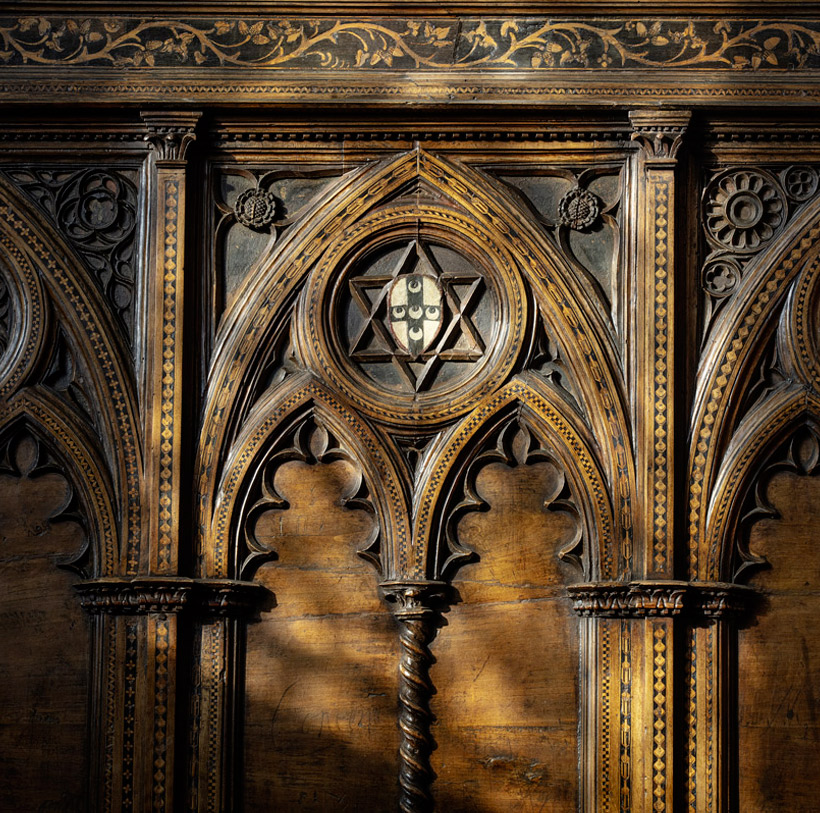The Board of Governors is made up of seven members and elects the Chairman and Deputy Chairman from among those members.
- Mr. Francesco Martini
- Mr. Giampiero Colombini
- Fr. Antonio Canestri
- Dr. Anna Quadri
- Mr. Luca Piselli
- Mr. Lidia D’Errico
- Dr. Federica Neri
- Dr. Filippo Rubegni

Following completion of the project that turned the small village of Corsignano into the new city of Pienza, Pius II issued a bull on 28 August 1462 conferring patronage of the cathedral, provostship, canonry and Opera di Pienza on the Piccolomini Todeschini family.
With this important document, subsequently christened “Bolla del Riservo del Patronato” by 18th century jurists, the Pope issued the guidelines for the establishment of the Opera del Duomo, which needs to work hand in glove with all the local institutional bodies representing the secular and religious city as a whole if it is to function correctly. In fact, proper conservation of the cathedral and all its fixtures and fittings represents the symbol and proof of that spiritual union.
The way the Opera’s history played out over the centuries, however, was a far cry from the Pope’s wishes, for in delegating its correct functioning to others, he had, in effect, made it almost totally dependent on them. We might describe its history as a succession of legal clashes and dominant influences, although over the years they tended to delineate a tangible, if slow, move towards autonomy. We have no certain records of the Opera’s foundation.
It was only with Bishop Giovanni Cinughi’s Capitular Constitutions on 28 November 1464, a few months after the founder’s death, that the instructions contained in the papal bull were implemented. The most important chapter concerning the Opera is Chapter 34, entitled “De eletione operariorum”, stipulating the election of three members by the community, two of whom may be chosen by the patron.
Complying in full with Pius II’s plan in the arrangement formulated by Bishop Cinughi, the Opera was subordinate in every way to the chapter, which wielded its authority through the central figure of the canon chamberlain, the figure in charge of running the Opera under the supervision of the bishop and patrons, who at that time were the Pope’s nephews Giacomo and Andrea.
Despite the guidelines laid down in the bull and in Bishop Cinughi’s Capitular Constitutions, the Piccolomini (with the bishops’ passive acquiescence) continued to appoint the Opera’s members as they chose, ignoring the requirement of the trio presented by the community and depriving the canon chamberlain of his role. It fell to Bishop Gioia Dragomanni, who was not related to the Piccolomini, to attempt to curb the excessive authority acquired by the patrons.
The solution he proposed echoed that of Bishop Cinughi: management was taken out of the hands of the Opera member and restored to the chamberlain of the chapter’s assets; the two Opera members, now once again subordinate to the chamberlain, were chosen by the patrons of the trio presented by the community and confirmed by the bishop, who took responsibility for supervising the accounts in keeping with the dictates of the Council of Trent.
The Opera’s secularisation, which had sparked serious tension between the bishop’s authority and secular ministers in the 18th century, was only fully completed in 1939 with the establishment of the Fabbriceria by Royal Decree n° 2262 on 2 December. The Fabbriceria’s new statute came into force in April 1992.

